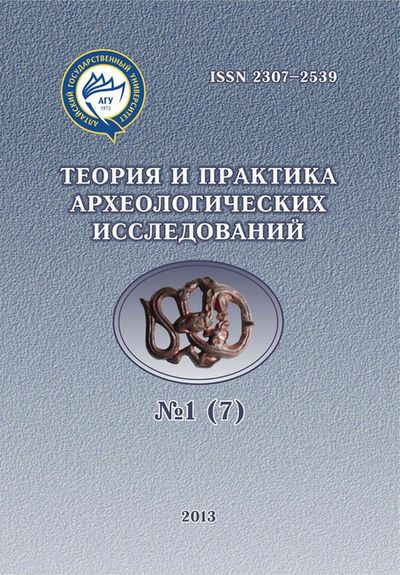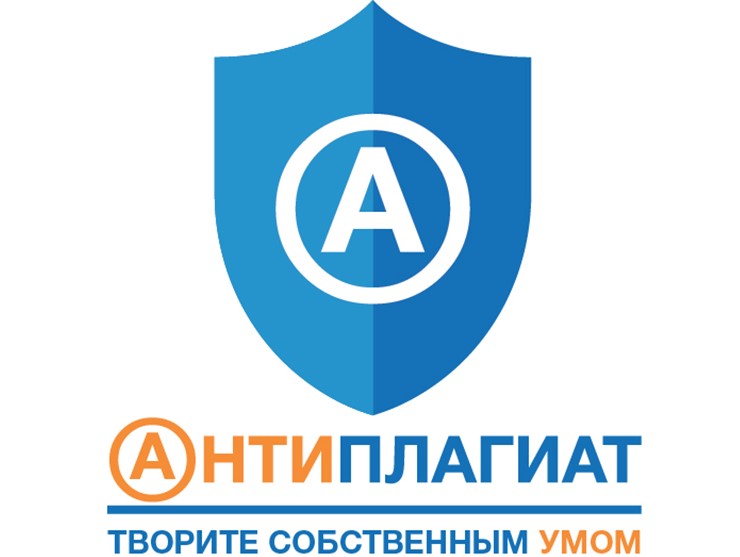POSSIBLE MEANINGS AND PARALLELS TO «HORNED» HORSES OF PAZYRYK CULTURE
Abstract
Excavation of Pazyryk barrows in Altai dating from the Scythian-Saks time revealed a uniquely preserved series of products made from organic materials. Among them was the horse mask headband, which «turned» the horse into a horned animal e.g. deer, goat, griffin. Extensive literature is devoted to questions of the meaning of the ancient masked horses, of which there are several graphic reconstructions. Comparison of the masks found in Pazyryk barrows, to some artifacts and to pictorial complexes discovered in the territory from China to the British Isles, enables one to assume the existence of these mythical characters; horsemen riding on horned animals in the huge spaces of Eurasia in the 2nd half of the first millennium BC. This probable component of such heroic myths makes them particularly relevant to the early Iron Age, when the expectation for the role of the warrior/leader/ hero was great. Interpretation of these activities can reveal certain aspects of the worldview of ancient peoples. Materials from neighboring areas as well as from very remote regions may provide substantial assistance in this process.
Downloads
Metrics
References
Акишев К. А. Курган Иссык. М.: Искусство, 1978.132 с.
Гуммель Я. И Раскопки к юго-западу от Ханлара в 1941 г. // ВДИ. 1992. №4. С. 5–15.
Кузьмина Е. Е. Конь в религии и искусстве саков и скифов // Скифы и сарматы. Киев: Наукова думка, 1977. С. 96–119.
Марьяшев А. Н. Петроглифы Семиречья // Звери в камне. Первобытное искусство. Новосибирск: Наука, 1979. С. 211–229.
Новгородова Э. А. Мир петроглифов Монголии. М.: Наука, 1984. 167 с.
Руденко С. И. Культура населения Горного Алтая в скифское время. М.; Л.: Изд-во АН СССР, 1953. 402 с., табл.
Руденко С. И. Культура населения Центрального Алтая в скифское время. М.; Л.: Изд-во АН СССР, 1960. 359 с., табл.
Черемисин Д. В. О семантике маскированных рогатых лошадей пазырыкских курганов // Археология, этнография и антропология Евразии. 2005. №2 (22). С. 129–140.
Alföldi M.R. Antike Numismatik. Teil 1 // Kulturgeschichte der antiken Welt. Mainz am Rhein: Verlag Philipp von Zabern, 1978. Bd. 2 . 218 S.
Allen D.F. The Coins of the Ancient Celts. Edinburgh: University Press, 1980. 265 p.
Anati E. Camonica Valley. N. Y.: Ed. Alfred A. Knopf, 1961. 262 p.
Ancient Gold: The Wealth of the Thracians. N. Y.: Harry N. Abrams, Inc. Publishers, 1998. 255 p.
Birkhan H. Kelten. Versuch einer Gesamtdarstellung ihrer Kultur. Wien: Verlag der Österreichischen Akademie der Wissenschaften, 1997. 1275 S.
Botheroyd S. & P. F. Keltische Mythologie von A–Z. Wien: Tosa Verlag, 2004. 378 S.
Die Antiken im Albertinum. Mainz am Rhein: Verlag Philipp von Zabern, 1993. 109 s.
Die Unsterblichen Götter Griechenlands. Lindenberg im Allgäu: Kunstverlag Josef Fink, 2012. 600 S.
Egger M. Die erste Stierdarstellung auf einer keltischen Münze aus Bayern // Das archäologische Jahr in Bayern. 1988. Stuttgart: Konrad Theiss Verlag, 1989. S. 90.
Ewige Monumente. Grabschätze vergangener Kulturen. Wiesbaden: White Star Verlag GmbH, 2007. 432 S.
Franke P. R., Hirmer M. Die griechische Münze. München: Hirmer Verlag, 1964. 174 S.
Göbl R. Antike Numismatik. München: Battenberg Verlag, 1978. Bd. 2. 283 S., Taf.
Hofkes-Brukker Ch. Der Bassai-Fries in der ursprünglich geplanten Anordnung // Hofkes-Brukker Ch., Mallwitz A. der Bassai-Fries. München: Prestel Verlag, 1975. S. 43–145.
Im zeichen des Goldenen Greifen. Königsgräber der Skythen. München; Berlin; London; New York: Prestel Verlag, 2008. 340 S.
Krämer W. Figürliche Ritzzeichnungen auf Gefäßscherben Glatter Drehscheibenkeramik der Mittel- bis Spätlatènezeit // Germania. 1996. №74. S. 361–376.
Kunst der Kelten. 700 v. Chr. – 700 n. Chr. Stuttgart: Belser Verlag, 2009. 304 S.
Magagnini A., de Luca A. Meisterwerke aus Pompeji. Prachtvolle Wandgemälde. Vercelli: White Star Verlag, 2010. 175 S.
Medeas Gold. Neue Funde aus Georgien. Tiflis: Verlag Georgisches Nationalmuseum, 2007. 143 S.
Neils J., Oakley J. H. Coming of Age in Ancient Greece. Images of Childhood from the Classical Past. New Haven and London: Yale University Press, 2003. 333 p.
Nomadic Art of the Eastern Steppes. The Eugene V. Thaw and Other New York Collections. N. Y.: Yale University Press, 2002. 233 p.
Parlasca K. Die römischen Mosaiken in Deutschland // Römisch-Germanische Forschungen. 1959. Bd. 23. 156 S., Taf.
Pauli L. Eine frühkeltische Prunktrense aus der Donau // Germania. 1983. Bd. 61. S. 459– 486.
Pergamon. Panorama der antiken Metropole. Petersberg: Michael Imhof Verlag, 2012. 529 S.
Preston P. Metzler-Lexikon antiker Bildmotive. Stuttgart; Weimar: Verlag J. B. Metzler, 1997. 249 S.
Samašev Z. S., Bazarbaeva G. A., Žumabekova G. S. Die «goldhütenden Greifen» des Herodot und die archäologische Kultur der frühen Nomaden im kazachischen Altai. Skythenzeitlichen Kurgane von Berel´ und Tar Asu // Eurasia Antiqua. 2002. Bd. 8. S. 237–276.
Sammlung James Loeb // Forschungen der Antikensammlungen und Glyptithek. 2009. Bd. 1. 160 S.
Sotheby`s. Antiquities. 11th July. 1988.
Vajda L. Untersuchungen zur Geschichte der Hirtenkulturen // Veröffentlichungen des Osteuropa-Institutes München. Herausgeber: Georg Stadtmüller. Wiesbaden: Verlag Otto Harrassowitz, 1968. Bd. 31. 648 S., Abb.
Williams D., Ogden J. Greek Gold. Jewellery of the Classical World. L.: British Museum Press, 1994. 256 p.
Zwischen Gandhȃra und den Seidenstrassen. Felsbilder am Karakorum Highway. Mainz am Rhein: Verlag Philipp von Zabern, 1985. 36 S., Abb.
Copyright (c) 2017 Теория и практика археологических исследований

This work is licensed under a Creative Commons Attribution-NonCommercial-NoDerivatives 4.0 International License.
Theory and Practice of Archaeological Research is a golden publisher, as we allow self-archiving, but most importantly we are fully transparent about your rights.
Authors may present and discuss their findings ahead of publication: at biological or scientific conferences, on preprint servers, in public databases, and in blogs, wikis, tweets, and other informal communication channels.
Theory and Practice of Archaeological Research allows authors to deposit manuscripts (currently under review or those for intended submission to ABS) in non-commercial, pre-print servers such as ArXiv.
Authors who publish with this journal agree to the following terms:
- Authors retain copyright and grant the journal right of first publication with the work simultaneously licensed under a Creative Commons Attribution License (CC BY 4.0) that allows others to share the work with an acknowledgement of the work's authorship and initial publication in this journal.
- Authors are able to enter into separate, additional contractual arrangements for the non-exclusive distribution of the journal's published version of the work (e.g., post it to an institutional repository or publish it in a book), with an acknowledgement of its initial publication in this journal.
- Authors are permitted and encouraged to post their work online (e.g., in institutional repositories or on their website) prior to and during the submission process, as it can lead to productive exchanges, as well as earlier and greater citation of published work (See The Effect of Open Access).








2.jpg)



